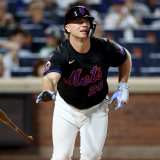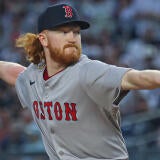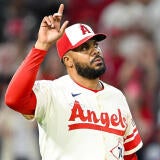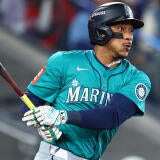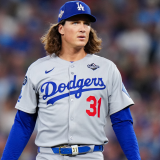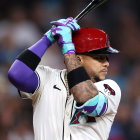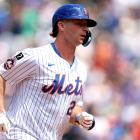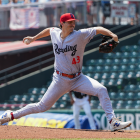2023 MLB draft: Five snubs from the Top 30, including a Wake Forest power hitter and an Arizona standout
There's plenty of time before July, but a few notable names still have some work to do
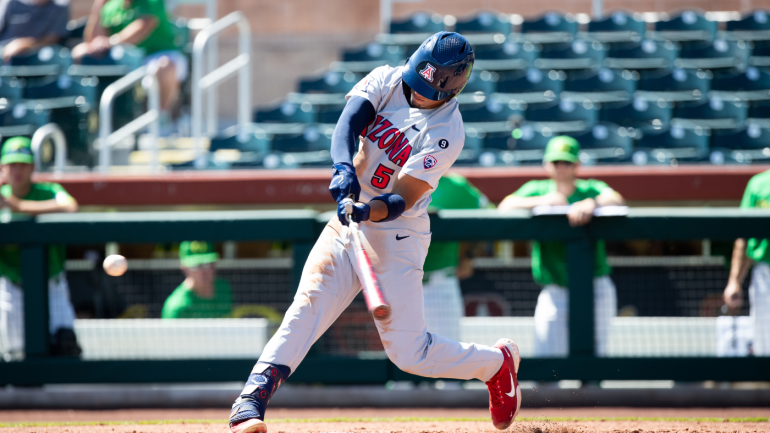
On Thursday, CBS Sports published its annual preseason rankings of the top 30 prospects in this year's Major League Baseball draft class. These rankings, published in concert with the start of the college baseball season, were formed following conversations with scouts, analysts, and other front-office types, as well as through firsthand evaluations and historical research.
Although we're certain that plenty in our rankings will look silly come July's draft, some might wonder if we forgot to include a few well-known players on the initial list. We think transparency is important when it comes to these kinds of exercises, lest someone accuse us of click-baiting. That's why, on this fine day, we wanted to address five notable snubs from our top 30 list. Specifically, we wanted to explain why these players didn't make the cut.
You don't have to agree with our reasoning, of course. Just keep in mind that we're not saying these players are bad, or that they won't be deserving of a lucrative signing bonus this July. We're simply explaining why they didn't make our initial list. (Do note the players are presented in no particular order.)
With that in mind, let's get to it.
1. Brock Wilken, 3B, Wake Forest
BR💣CK WILKEN NO DOUBTER ‼️
— Wake Forest Baseball (@WakeBaseball) March 13, 2022
📺 ACCNX
💻 https://t.co/XLt8ClwxRi@B_Wilkes25 | #GoDeacs 🎩 pic.twitter.com/OwNPjYPkqk
Why you would expect him to be ranked: Wilken has as much raw strength as anyone in the class. He homered 23 times last season for the Demon Deacons, running his career total to 40 in 107 collegiate contests. Wilken's exit velocity numbers are also excellent, as you would guess based on the previous stat.
Why he's not: Scouts have reservations about Wilken's hit tool and positional outlook. He struck out in 24 percent of his plate appearances last season, including more than 26 percent of his trips to the plate in ACC play and as part of the Cape Cod League. Wilken is an extreme fly-ball hitter, but he often finds himself getting too far underneath the ball, resulting in pop-ups. Those rainmakers, plus his K's, make him responsible for a lot of automatic outs. Teams might overlook those blemishes if Wilken were a surefire third baseman, or, at least, a left-handed batter. Unfortunately, he's a righty who might need to slide down the defensive spectrum sooner than later. We suspect Wilken's brute strength will still convince a team to draft him fairly early.
2. Chase Davis, OF, Arizona
Why you would expect him to be ranked: Davis has been on prospect radars since his high school days thanks to his athleticism and power. He posted a .997 OPS for the Wildcats last season, homering 18 times in 63 games.
Why he's not: Put simply, Davis has several red flags in his offensive profile. He's struck out in about a quarter of his plate appearances in conference play the last two seasons, and his in-zone contact rate last season was in the low 70s. That puts him around the territory occupied by Brock Jones, the enigmatic Stanford outfielder who dropped all the way to the 65th pick last July. It's hard to look at Davis' swing, which includes an extreme bat wrap before his launch, and feel as though he's going to make more contact without an overhaul. His overall upside is such that some team will still gamble on him over the first couple rounds. We're just not convinced he'll find his way into round one.
3. Travis Sykora, RHP, Round Rock HS (TX)
Travis Sykora ('23, TX) has overwhelmed hitters w/ the heater. Topped out at 100 mph. Offering sat in the upper-90’s throughout. Paired it w/ a tight SL at 85-87 mph. #Texas commit #PGAAC @Texas_PG pic.twitter.com/ng40xWJhFi
— Dick’s Sporting Goods All-American Classic (@PGAllAmerican) August 29, 2022
Why you would expect him to be ranked: Sykora is a massive, 6-foot-6 right-hander with a commitment to Texas. He cleared the 100 mph threshold at the Perfect Game All American Classic.
Why he's not: Historically speaking, it's almost always wise to fade prep right-handers -- especially those who are getting by primarily on their arm strength. (See Tyler Kolek, Riley Pint, and others for more on that dynamic.) While Sykora might end up being an exception, right now he's the pitching equivalent of primordial goo. He can throw the ball hard, but his command and secondaries aren't at the level where we feel comfortable ranking him top 30. Velocity always attracts, so we feel confident Sykora will have a chance to cash in on his massive velocity readings come July regardless of where we rank him.
4. Yohandy Morales, 3B, Miami
Why you would expect him to be ranked: Morales, like the aforementioned Davis, was a well-regarded prospect coming out of high school. He's since hit .308/.380/.594 with 29 home runs at an ACC program, and has done so while playing a solid third base.
Why he's not: We're going back to the hit-tool well once again, folks. Morales has struck out in 21 percent of his career collegiate plate appearances to date, and last season he made contact on barely more than 70 percent of his in-zone swings. (Remember, the same was true of Davis.) It's not just that he whiffs, he also goes fishing a fair amount. The combination of empty and bad swings gives scouts pause when they're projecting how he'll fare at the next level. Morales does have a wider berth than, say, Wilken, because of his defensive chops. It's just not wide enough to absolve him of his blemishes at this point in time.
5. Maui Ahuna, SS, Tennessee
This is not supposed to look easy.#SCTop10 | @MauiAhuna pic.twitter.com/K6UczX2Z4T
— Kansas Baseball (@KUBaseball) May 21, 2022
Why you would expect him to be ranked: Ahuna is a left-handed-hitting shortstop who batted .396/.479/.634 with eight home runs and 13 steals last season at Kansas. The Volunteers liked him enough to nab him as part of their loaded summertime transfer class.
Why he's not: The Cape Cod League still carries a lot of weight with scouts as a proving grounds for professional prospects. That's bad news for Ahuna, who suffered through a putrid seven-game stint there over the summer, batting .167/.286/.167 with nearly four times as many strikeouts (15) as walks (four) in just 28 plate appearances. His swing-and-miss rate was over 40 percent, and he showed poor pitch recognition on breaking balls. Maybe Ahuna was just having a bad week (it happens), but the evaluators who spoke to CBS Sports want to see how he fares in the SEC before giving him a first-round grade.



